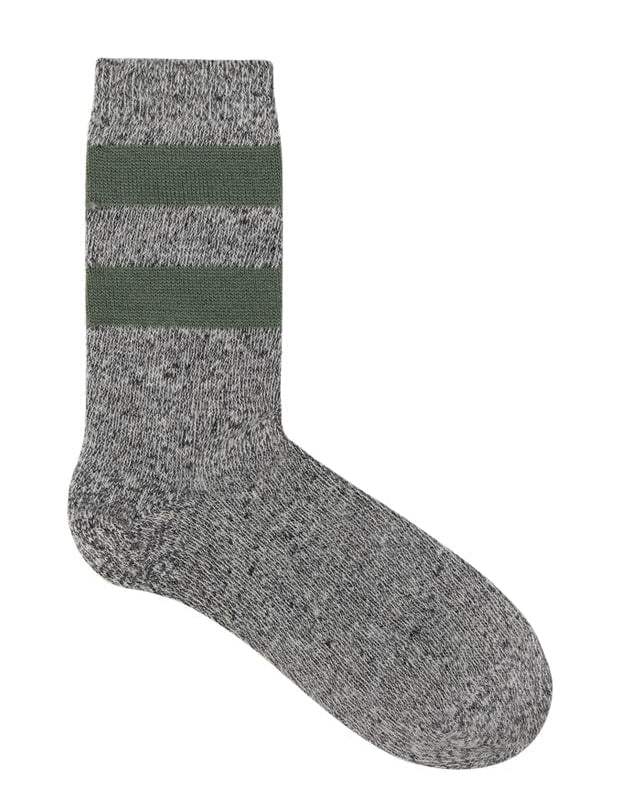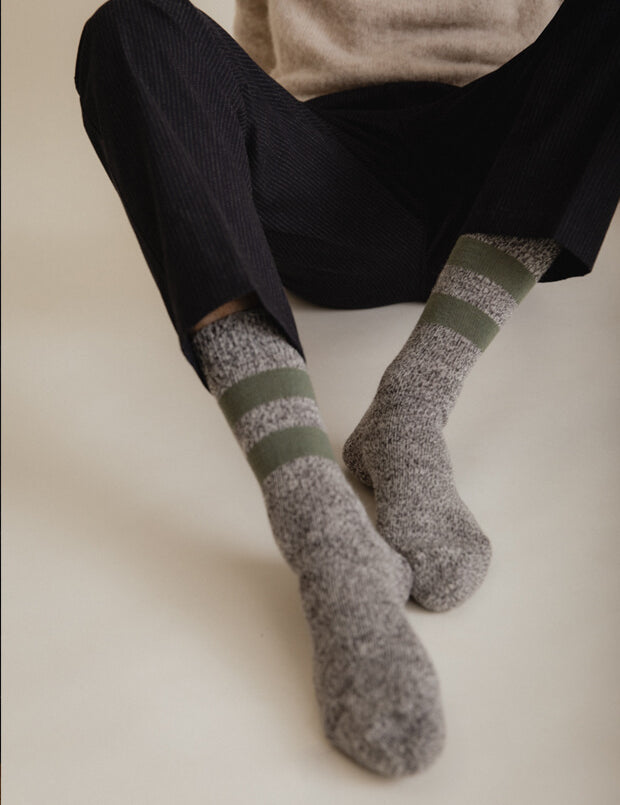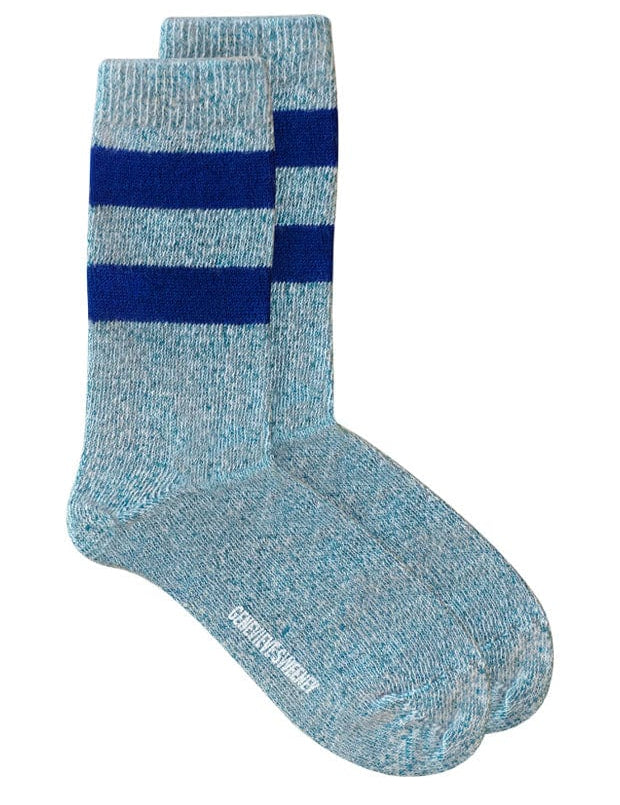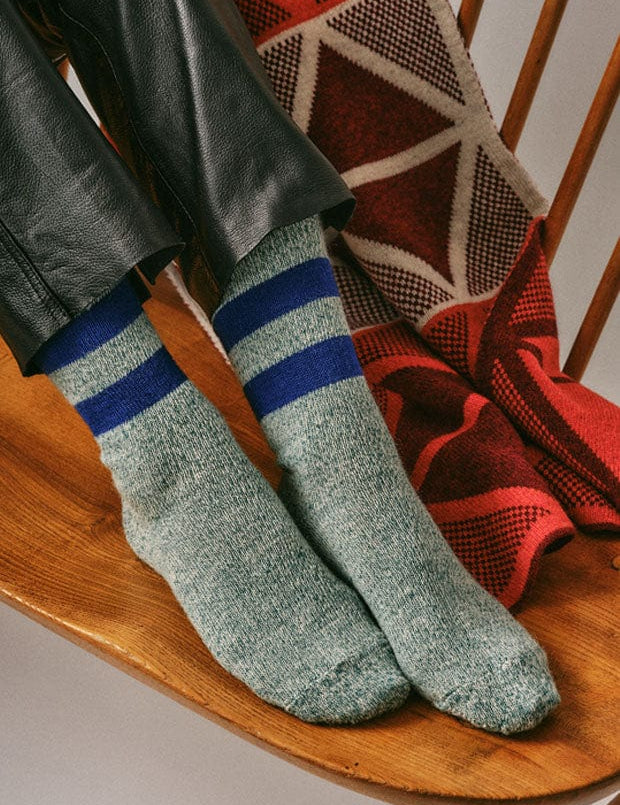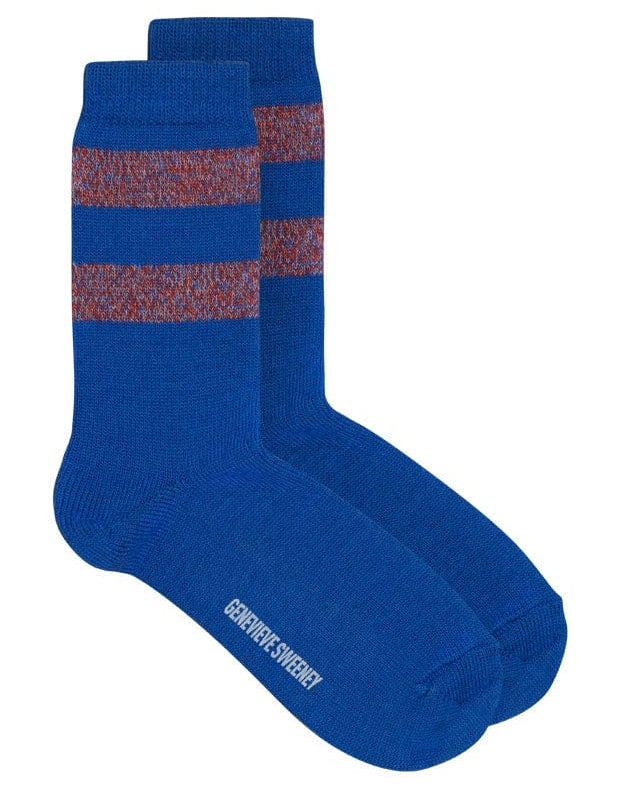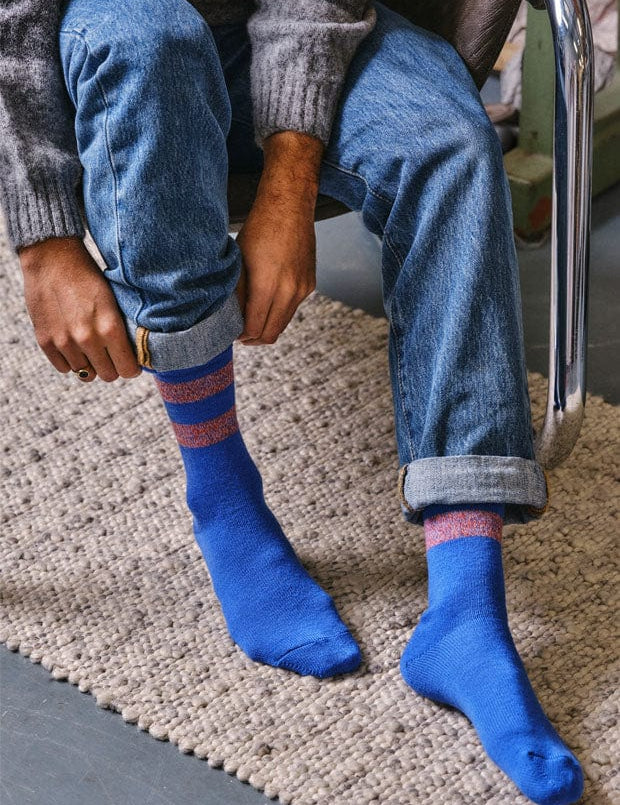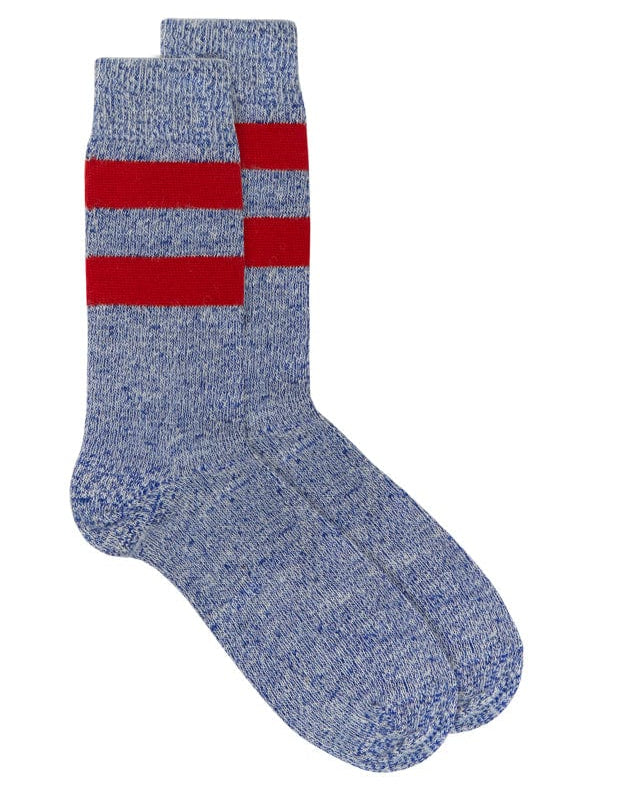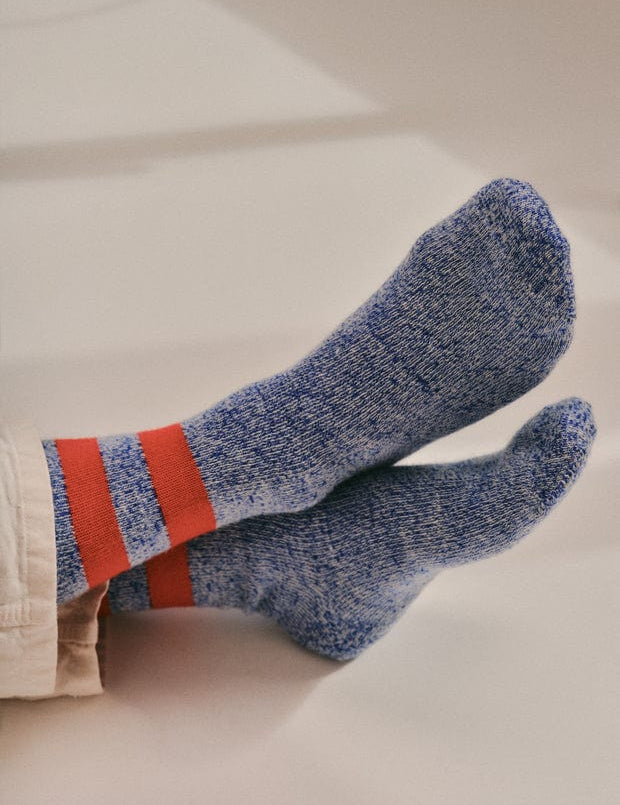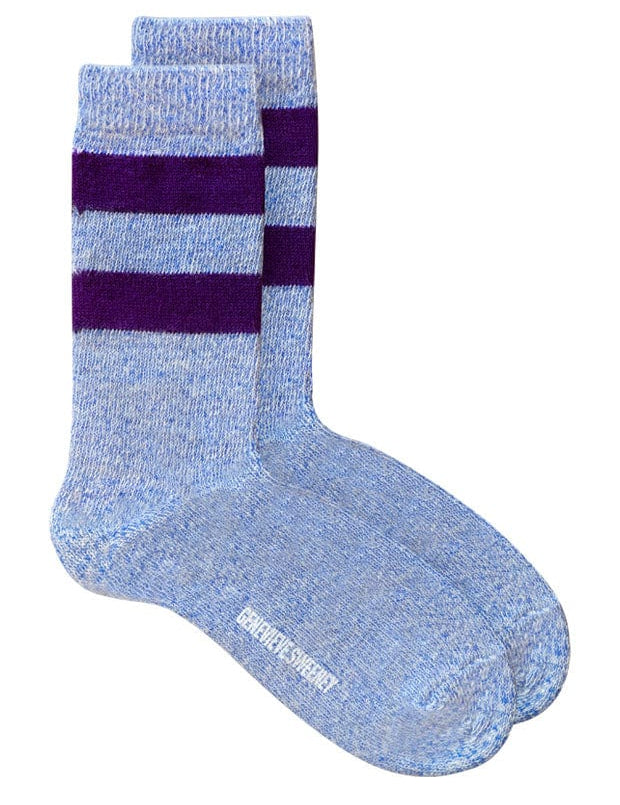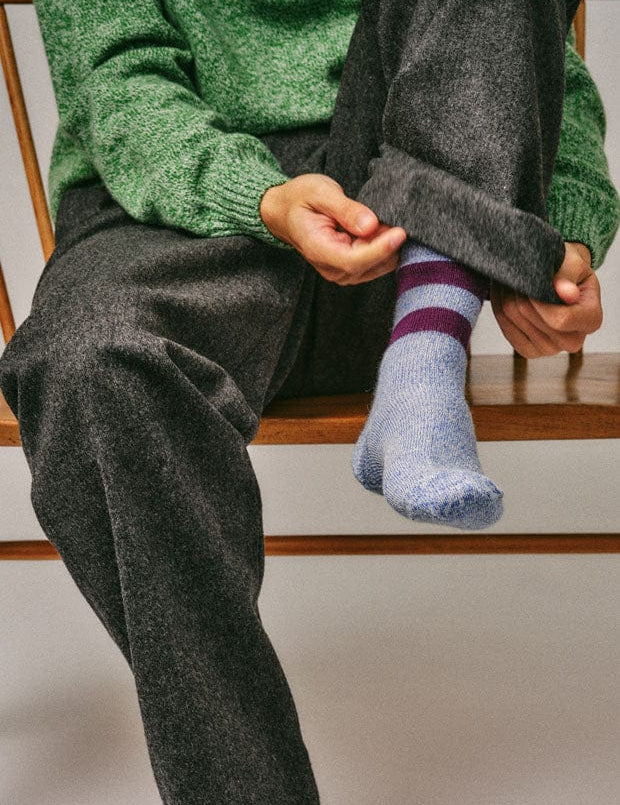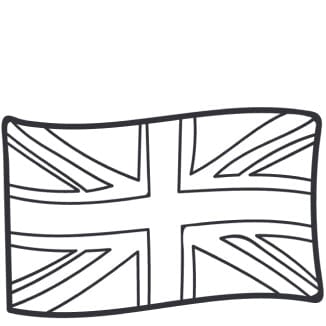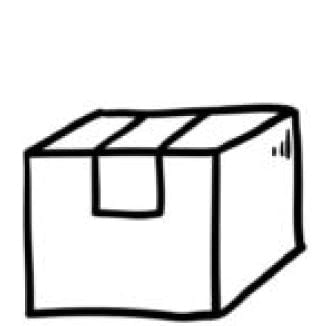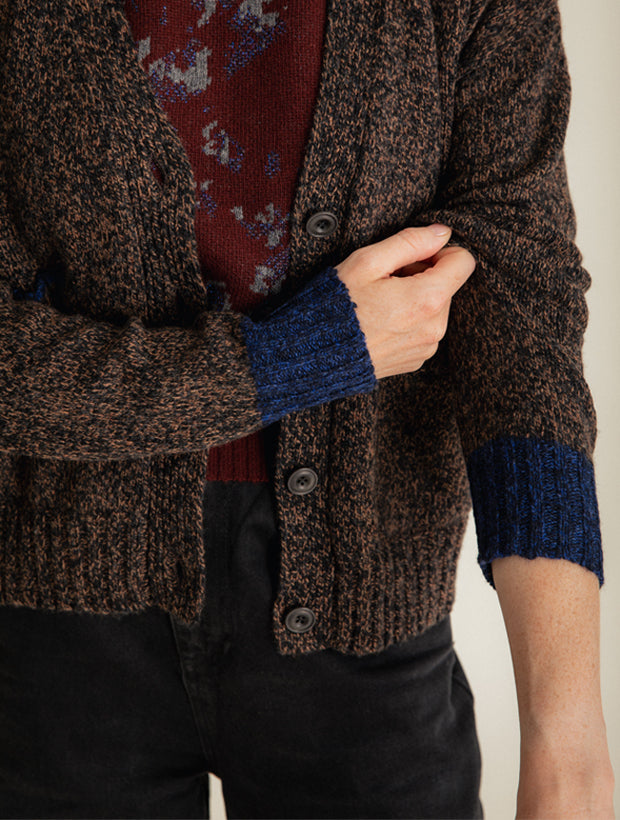Heritage and tradition reimagined in new, creative designs
Helping put Britain on the map, the British knitting industry was renowned for its high-quality products for hundreds of years. As a British knitwear brand with deep roots in tradition and craftsmanship – and a British knitwear designer as our founder – this heritage is incredibly important to us.
We work with hand-selected mills and factories across the UK, collaborating with those that adhere to time-honoured crafts that have been passed down through generations. By embracing the diverse history of British knitting, from the Scottish islands to Yorkshire. Cornwall, and the Channel Islands, our designs are not only a part of this rich legacy, they enable it to live on in bold new contexts.
Despite the modern innovations in knitting machines, our passion lies in hand intarsia and fully fashioned hand-flat knitting. Nothing can replicate the high quality and intricate attention to detail achieved with skilled hands. In launching Genevieve Sweeney, Genevieve wanted to celebrate and champion these heritage skills, including hand intarsia and yarn spinning – always with ethical and sustainable practices in mind.
KNITTING ON TRADITIONAL MACHINES
Having garments knitted on traditional knitting machines is important to us – it helps preserve heritage crafts at risk of being phased out by modern high-tech machinery.
The Fidra sweater is a perfect amalgamation of slow fashion and British manufacturing. The body and sleeves of this sweater are knitted on a Bentley Knitting Frame Machine in a traditional factory located in the Scottish Borders. This machine can knit eight panels at one time whilst individually fashioning each panel. The placket and collar are knitted on a hand-operated Dubied machine, which is attached to the body after it has been linked and milled.
Our geometric socks (including the Serora, Sia, Sigi and Selina) are also knitted using a traditional intarsia sock machine. This incredibly rare machine allows you to create patterns without loops on the inside. The Serora spiral stripe and Sigi zigzag stripe demonstrate how you can create a seamless pattern and colour block, combining a traditional machine with a modern design twist.
knitted using a traditional intarsia sock machine
conventional linking
A personal favourite of Genevieve’s. Conventional linking is the method of joining together the edges of individual pieces of a garment using a linking machine. The knitted fabric is placed onto the machine and then one stitch is placed on one needle, creating a near-imperceptible seam and making it more comfortable than a bulky seam sewn by a machine.
The end result is a running stitch on the outside and a chain stitch on the inside to secure the piece of knitwear together. The neckline is also linked onto the body, each stitch matching the point of the machine, giving a clean, highest-quality finish to the garment.
This traditional craft is time-consuming, labour-intensive and requires a lot of skill. Perfecting it can take up to 18 months, and those who learn linking skills are in high demand due to the art form sadly dying out. Precision, patience, and good eyesight are needed, especially when linking fine, dark-coloured knitwear.
You can see videos of this beautiful art on my Instagram.


milling
In order to create the highest quality and softest knitwear, the traditional skill of milling garments has been passed down through generations.
Nowhere is this truer than in Scotland, where the purity of Scottish water washes and uniquely softens the woollen yarn, bringing the fibres to life whilst showcasing their unique characteristics. Millers here are expertly trained, and through their experience are able to discern when, how, and at what quantity and frequency each yarn needs washing.
YARN PROCESSES
We source our lambswool and cashmere yarn from one of the oldest Scottish yarn mills on the shores of Loch Leven. The water’s natural purity and softness help to open up the natural fibres of the wool, resulting in incredibly high quality.
The fleece is dyed before it is spun using environmentally friendly dyes, which means the water can be returned to the Loch after the dyeing process. This responsible practice and emphasis on protecting the environment illustrates the interweaving of slow fashion, sustainability, and heritage at the core of the Genevieve Sweeney brand. The mill also uses traditional machinery from the 1950s and 1960s to dye, card, wind, and spin the fleece, producing consistently high-quality yarn.
These machines tend to be slower than more contemporary equivalents, but they are also more gentle – prioritising quality over quantity.


BRITISH-MADE Buttons
British button-making is a centuries-old craft which was almost lost when the last remaining button-makers closed their doors in 2012. Fortunately, Courtney & Co. (who we are honoured to source our buttons from) launched just a year later, with the aim of reviving the craft of button-making while also focusing on using sustainable materials from which they make their buttons.
Every step of their button-making process is done in-house, including dyeing. Buttons are made from Corozo and three types of Codelite®: solid, pearlescent, and cornu (an alternative to real horn). The processes of turning, dyeing and polishing their buttons have been learnt over time from retired button-makers, and include time-intensive polishing techniques using natural materials such as maize husks, walnut shells and pumice.
Discover more about how Genevieve Sweeney buttons are made here.


BRUSHING TECHNIQUE
To create a shaggy, almost felted quality that man-made tools simply cannot match, wool is brushed with dried teasel thistles. This is a time-honoured and completely natural technique used for softening yarn; lifting and pulling its fibres. The technique is mainly used for Supersoft Shetland knitwear, and in many ways epitomises the ideals behind the slow fashion lifestyle.



